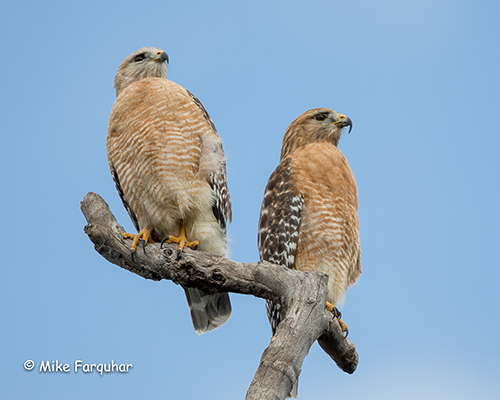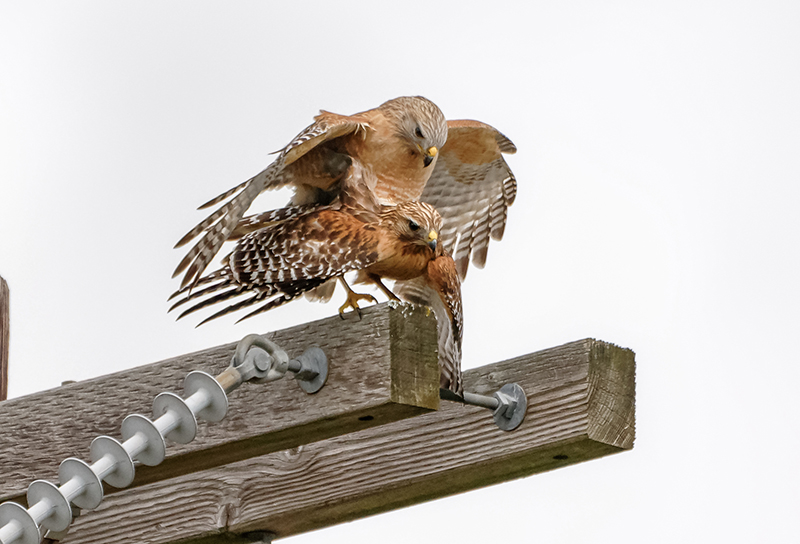Spring Nesting for Red-Shouldered Hawks in Hardberger Park
By Patsy Kuentz, Alamo Area Master Naturalist, Photos by Mike Farquhar
One of the most commonly seen raptors at Phil Hardberger Park, the Red-shouldered Hawk (Buteo lineatus) frequents heavily wooded areas, periodically making appearances at clearings in search of food. It is relatively easy to identify this medium-sized hawk flying at a distance because of the deep reddish striping on its under parts and its white-banded tail. Translucent crescent patches near the wingtips also help identify the bird. The Red-shouldered Hawk often announces its presence with its loud "kee-ah," the second note descending in pitch. It is common to hear the bird call before observing it.

In the spring, Red-shouldered Hawk pairs find and refurbish a previous nest or build a new one to prepare for the family they will create that year. Park visitor, Mike Furquhar, captured these images of a pair of Red-shouldered Hawks mating in the park on April 26th.

The nest is often located in the crook of a tree. Made of sticks and twigs, the nests are lined with soft lichens and moss as well as bark. When the nest is suitable, the birds mate several times over the course of a few days, with the female perching quietly while the male sex organs touch the female's sex organs for just a few moments in what is called in the birding world a "cloacal kiss." The female hawk then lays two to five eggs in the nest. After 32 to 40 days of incubation, the eggs hatch, and the parents' role turns to gathering food for the hungry hatchlings. Over the next 42 to 49 days, the babies grow rapidly and then fledge from the nest.
While parents are tending their young, they can become aggressive to anything or anyone they think might present a danger to their babies. Other birds and human beings are likely suspects. Several years ago, a Red-shouldered Hawk pair took command of a yard in the nearby Churchill Estates subdivision while their hawk babies were growing up in a nearby nest. Sometimes Red-shouldered Hawks are seen at backyard feeding stations in the area. They do not eat seed or suet from the feeders but rather are looking to make a meal of the small birds who are distracted by their own eating. Even though these behaviors can be troublesome or concerning for humans, it is against the law to disturb, harm, or try to run off these nesting birds.
We are fortunate to have such majestic birds in our area. Red-shouldered Hawks can be very enjoyable to watch as they cruise the sky and call to let us know that they are in their territory.

